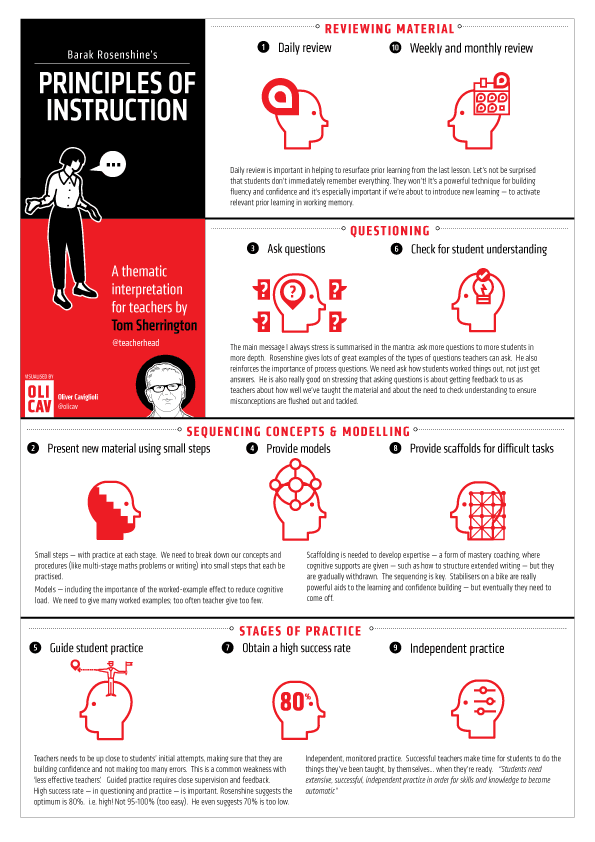Conclusion and Evaluation
Teaching, and subsequently teachers, is a profession that is represented by a continuum on which one moves from novice to expert. However, this movement does not simply progress based on years in service or experience; becoming an expert involves engaging in practice. Daniel Willingham, a celebrated cognitive psychologist, illustrates the difference between experience and practice by discussing his skill as a driver. Willingham (2009) self-deprecatingly describes himself as not a particularly good driver; although he is an experienced driver, meaning he has engaged in the activity for some time, he does not practice driving, meaning purposefully trying to improve. As a result, by his own admission, Willingham is effectively no better a driver today than he was when he first passed his driver’s test. This concept applies to the teaching profession as well. For teachers to move from novice to expert, they need to actively engage in deliberate practice as a means for continuous improvement. Dylan Wiliam points this out in Creating the Schools Our Children Need (2018):
If, as research suggests, expertise in teaching is like expertise in other areas, we could have almost all our teachers as good as the very best if we created an environment in which every teacher gets at least ten years of deliberate practice, where every teacher commits to improving, not because they are not good enough, but because they can be even better. And when teachers do their jobs better, their students live longer, are healthier, and contribute more to society. (p. 164)
High Leverage Teaching Practices, articulated by Rosenshine’s Principles (2012) and filtered through the lens of Sherrington’s (2019) four strands, represent the research-based aspects of practice that are most likely to have a positive impact on student learning.

“Please, please, please do not corrupt the spirit and intent of the ‘Principles of Instruction’ by turning it into a lesson-by-lesson checklist. Use it to lift people up, not tie them down.”
(Sherrington, 2019, p. 50)

